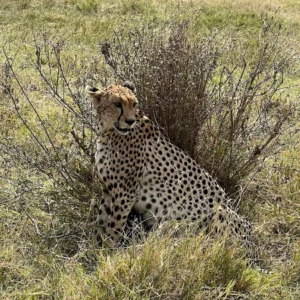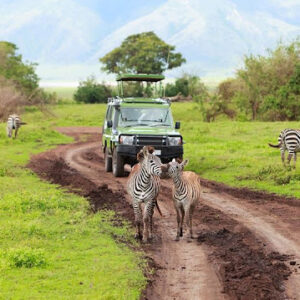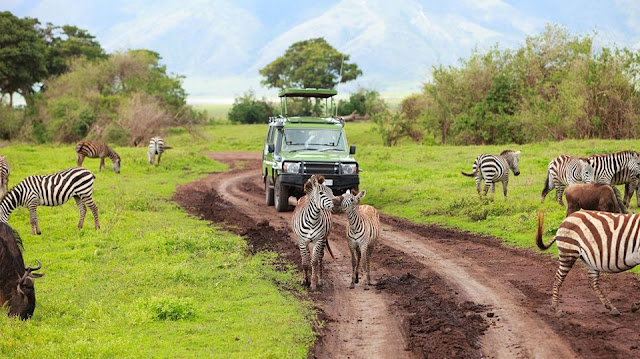What Birds Can I See While Climbing Mount Kilimanjaro?
Mount Kilimanjaro, the majestic peak standing tall in Tanzania, not only offers breathtaking views and exhilarating adventures on what birds can i see while climbing Mount Kilimanjaro? for climbers but also serves as a haven for a diverse range of bird species. As you embark on your journey to conquer this iconic mountain, you’ll be delighted to encounter an array of avian wonders soaring through its skies and inhabiting its lush surroundings. In this comprehensive guide, we delve into the fascinating world of birds that you can encounter while climbing Mount Kilimanjaro.
1. The Enigmatic White-necked Raven
As you ascend the slopes of Mount Kilimanjaro, keep your eyes peeled for the distinctive silhouette of the White-necked Raven. With its sleek black plumage contrasting against the pristine mountain backdrop, this intelligent corvid is a captivating sight to behold. Known for its adaptability to high-altitude environments, the White-necked Raven is often spotted effortlessly gliding through the crisp mountain air, adding a touch of mystique to your climbing experience.
2. Majestic Vultures: Masters of the Sky
Gliding gracefully on thermal currents, vultures command the skies above Mount Kilimanjaro with their majestic presence. These scavenging birds play a crucial role in the mountain’s ecosystem, scavenging carrion and helping maintain ecological balance. Keep a lookout for species such as the African White-backed Vulture and the Rüppell’s Vulture, as they soar overhead, offering a spectacular aerial display against the backdrop of Africa’s highest peak.
3. Graceful Buzzards: Masters of Soaring
As you ascend higher into the alpine zones of Mount Kilimanjaro, you may encounter the elegant buzzards gracefully riding the thermals. With their broad wings outstretched, these raptors effortlessly navigate the mountain’s updrafts, showcasing their mastery of aerial maneuvers. Species like the Augur Buzzard and the Mountain Buzzard are commonly sighted, their keen eyes scanning the terrain below for potential prey.
4. The Intelligent Ravens of Kilimanjaro
Ravens are among the most iconic and intelligent birds found on Mount Kilimanjaro. With their glossy black plumage and distinctive croaking calls, these avian scavengers are a common sight along the mountain’s trails. Keep an eye out for them perched on rocky outcrops or soaring overhead, their keen intelligence and adaptability making them well-suited to the harsh mountain environment.
5. Vibrant Hornbills: Guardians of the Forest
As you traverse through the lush montane forests of Mount Kilimanjaro, you may encounter the vibrant hornbills darting among the treetops. With their striking plumage and distinctive casques, these charismatic birds add a splash of color to the verdant landscape. Look out for species such as the Silvery-cheeked Hornbill and the Trumpeter Hornbill, their melodious calls echoing through the forest canopy.
6. The Elegant Turacos: Jewel of the Treetops
Renowned for their dazzling plumage and graceful demeanor, turacos are a sight to behold in the forests of Mount Kilimanjaro. With their vibrant hues of green, red, and blue, these arboreal birds blend seamlessly into the lush foliage, their presence adding a touch of elegance to the mountain’s biodiversity. Keep your binoculars handy to catch a glimpse of these exquisite avian jewels as they flit among the branches in search of fruits and insects.
7. The Stealthy Shrikes: Masters of Camouflage
Amidst the scrublands and savannas surrounding Mount Kilimanjaro, you may encounter the stealthy shrikes perched atop thorny acacia trees. With their cryptic plumage and hooked bills, these predatory birds blend effortlessly into their surroundings as they patiently await their prey. Keep a keen eye out for the Fiscal Shrike and the Long-tailed Fiscal, their sharp eyes and agile hunting techniques making them formidable predators in the African bush.
8. Cuckoos: Harbingers of Change
As you journey through the diverse habitats of Mount Kilimanjaro. You may hear the distinctive calls of cuckoos resonating through the air. These enigmatic birds, known for their brood parasitism behavior, are often associated with the changing seasons and the arrival of the rainy season in East Africa. Listen for the unmistakable calls of species such as the African Cuckoo and the Klaas’s Cuckoo. Their haunting melodies signaling the rhythm of nature’s cycles.
9. Flycatchers: Masters of Aerial Acrobatics
In the montane forests and woodlands of Mount Kilimanjaro. Keep an eye out for the agile flycatchers as they dart through the foliage in pursuit of flying insects. With their sleek bodies and aerial acrobatics, these small passerines are adept at capturing their prey on the wing. Showcasing their remarkable agility and precision. Look out for species such as the African Paradise Flycatcher and the White-eyed Slaty Flycatcher. Their vibrant plumage and distinctive calls adding to the sensory richness of your mountain adventure.
10. Barbets: Guardians of the Treetops
Perched amidst the canopy of Mount Kilimanjaro’s forests, barbets are a common sight. Their colorful plumage and distinctive calls enlivening the verdant landscape. These frugivorous birds play a crucial role in seed dispersal. Feeding on a variety of fruits and berries and dispersing the seeds across the forest floor. Keep your eyes and ears tuned for species such as the Yellow-rumped Tinkerbird and the Red-fronted Tinkerbird. Their melodious calls echoing through the canopy as they forage for food.
11. Chats: Songsters of the Mountains
In the rocky outcrops and scrublands of Mount Kilimanjaro. You may encounter the melodious chats as they serenade you with their enchanting songs. With their subtle plumage and distinctive vocalizations, these small thrush-like birds add a musical soundtrack to your mountain trek. Look out for species such as the Northern Anteater Chat and the Mocking Cliff-Chat. Their cheerful tunes echoing through the rugged terrain as they establish their territories and courtship displays.
12. Woodpeckers: Drummers of the Forest
As you explore the wooded habitats of Mount Kilimanjaro. Keep an ear out for the rhythmic tapping of woodpeckers as they excavate cavities in search of insects. These industrious birds play a vital role in ecosystem dynamics. Creating nesting sites for themselves and providing habitat for a myriad of other species. Keep a lookout for species such as the Nubian Woodpecker and the Olive Woodpecker. Their distinctive drumming sounds reverberating through the forest canopy.
13. Bee-eaters: Jewel-toned Hunters
With their vibrant plumage and aerial prowess, bee-eaters are a dazzling sight to behold on the slopes of Mount Kilimanjaro. These insectivorous birds are known for their agile flight and remarkable hunting skills. Capturing flying insects on the wing with astonishing precision. Look out for species such as the Little Bee-eater and the White-throated Bee-eater. Their jewel-toned feathers and acrobatic displays adding a splash of color to the mountain landscape.
14. Sunbirds: Nectar Sippers of the Mountains
In the flowering shrubs and trees of Mount Kilimanjaro. You may encounter the iridescent sunbirds as they flit from blossom to blossom in search of nectar. With their long, slender bills and shimmering plumage. These avian gems are perfectly adapted to feed on the sweet nectar hidden within the blooms. Keep your eyes peeled for species such as the Variable Sunbird and the Eastern Double-collared Sunbird. Their vibrant hues and delicate beauty enhancing the floral splendor of the mountain slopes.
Birds Diversity Across Kilimanjaro’s Climatic Zones
Embark on a birding adventure as you ascend Mount Kilimanjaro. Encounter an array of avian species, each adding to the allure of this iconic trek.
Montane Forest Zone: Explore the lush montane forests that cloak the lower slopes of Kilimanjaro. Here, amidst verdant foliage and moss-draped trees, you may encounter species such as the White-eyed Slaty Flycatcher and the vibrant Silvery-cheeked Hornbill.
Heath and Moorland Zone: Transitioning to the heath and moorland zone, expect to encounter hardy bird species adapted to the challenging conditions. What birds can I see while climbing Mount Kilimanjaro? Look out for the Alpine Chat, a striking bird with its distinctive white eyebrow stripe, and the elusive African Crowned Eagle soaring overhead.
Alpine Desert Zone: As you ascend higher, enter the otherworldly landscape of the alpine desert zone. What birds can I see while climbing Mount Kilimanjaro? Despite the harsh environment, this habitat supports resilient birds like the Scarlet-tufted Malachite Sunbird and the iconic Lammergeier, also known as the bearded vulture.
Summit Zone: Reaching the summit of Kilimanjaro, marvel at the hardy bird species that eke out an existence in this extreme environment. What birds can I see while climbing Mount Kilimanjaro? The Augur Buzzard and the Alpine Swift are among the few species adapted to survive at such altitudes.
Birding Tips for Kilimanjaro Trekkers
Maximize your birdwatching experience while climbing Mount Kilimanjaro with these expert tips:
Start early: Many bird species are most active during the early hours of the morning, making dawn an ideal time for birdwatching.
Listen for calls: Birdsong often provides clues to a bird’s presence, even when the bird itself is hidden from view.
Be patient and observant: Scan your surroundings carefully, paying attention to movement and subtle cues that may indicate the presence of birds.
What birds can I see while climbing Mount Kilimanjaro?
While climbing Mount Kilimanjaro, you can encounter a diverse range of bird species, including the White-necked Raven. Vultures, Buzzards, Ravens, Hornbills, Turacos, Shrikes, Cuckoos, Flycatchers, Barbets, Chats, Woodpeckers, Bee-eaters, and Sunbirds. These describe more about what birds can i see while climbing Mount Kilimanjaro?
Can I go birdwatching while climbing Mount Kilimanjaro?
Absolutely! Mount Kilimanjaro offers excellent opportunities for birdwatching, especially in the diverse habitats along its slopes. Whether you’re a short birder or a casual enthusiast, you’ll be delighted by the array of avian wonders waiting to be discovered.
What is the best time of year for birdwatching on Mount Kilimanjaro?
The best time for birdwatching on Mount Kilimanjaro is during the dry seasons. Typically from January to March and June to October. During these periods, bird activity is higher, and clearer skies make for optimal viewing conditions.
Are there any guided birdwatching tours available on Mount Kilimanjaro?
Yes, several tour operators offer guided tours on Mount Kilimanjaro. Led by experienced local guides who are knowledgeable about the local avifauna. These tours provide an excellent opportunity to spot a wide variety of bird species while discover the mountain’s scenic trails.
Can I take photographs of the birds I encounter on Mount Kilimanjaro?
Absolutely! Photography is a fantastic way to capture the beauty of the birds you encounter while climbing Mount Kilimanjaro. Remember to bring a camera with a telephoto lens to capture clear shots of these magnificent creatures in their natural habitat.
What routes on Mount Kilimanjaro are best for Birdwatching?
While birdwatching opportunities abound throughout Mount Kilimanjaro. Some popular birding hotspots routes include Machame Route. Lemosho Route, and Marangu Route are known for their rich birdlife and stunning scenery. The montane forests, alpine meadows, and scrublands along the various climbing routes.
What should I bring for birdwatching on Mount Kilimanjaro?
When going birdwatching on Mount Kilimanjaro, it’s essential to pack binoculars. A field guide to local birds, a camera with a telephoto lens. Comfortable hiking attire, sturdy footwear, sunscreen, insect repellent, and plenty of water and snacks. Additionally, hiring a skilled guide can enhance your birdwatching experience.
Are there any bird conservation initiatives supported on Mount Kilimanjaro?
Yes, several conservation organizations and local communities are actively involved in bird conservation efforts on Mount Kilimanjaro. These initiatives focus on habitat restoration, community education, and sustainable ecotourism practices to protect the region’s rich avian biodiversity.
Conclusion: Embracing the Birdlife of Mount Kilimanjaro
As you embark on your journey to conquer Mount Kilimanjaro. Take a moment to marvel at the rich diversity of nature that inhabits its slopes and surrounding habitats. From the enigmatic raptors soaring overhead to the melodious songbirds serenading you along the trail. Each encounter with these avian wonders adds depth and richness to your mountain adventure. So, keep your binoculars handy, and immerse yourself in the captivating world of birds as you climb towards the summit of Africa’s highest peak.








